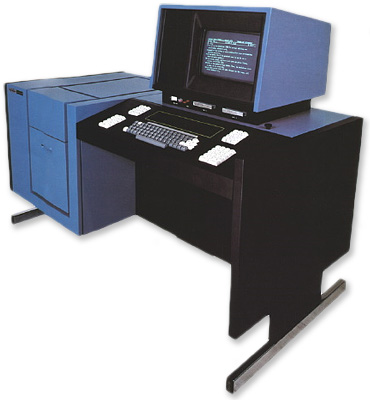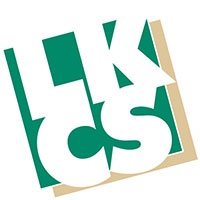As I remember back to 1975, when I started at LKCS (then known as Letterkraft Printers), I marvel at how much the design equipment has changed. For example, today you wouldn’t think twice about typing a quick headline on your computer to create an ad. Things weren’t always this easy!
The first machine I used was called an IBM Selectric typewriter. You can see the very same typewriter I used in the picture below.

Copy was typed in either Helvetica or Times font. Point size varied from 8 point to 11 point, and you had to change a font ball to change the font and/or size of the font.

A special type of paper was used when typing, and if you made a typo, you had to scrape off the mistake using an x-acto knife, backspace to the area of the error using the character backspace key and chart, and retype. For example the letter “i” was three character spaces while the letter “m” had nine character spaces.
Creating headlines or subheads were a whole different operation. These were created using a strip printer machine. We had various typestyle strips to choose from. You put the strip into the machine, moved to the letter of the alphabet you needed, hit a button to expose the film to a light, and then dip the resulting film into a chemical mixture.

The typed copy and the headlines were then waxed on the back side and applied to index paper on a light table, making sure copy was straight using an x-acto knife and t-square.

Forms were drawn on a light table, using a rapidogaph pen and a light table. The side of the light table had little notches in it that were spaced a pica apart to give you consistent spacing. If you wanted a thicker rule, such as a 4 pt. rule, imagine stretching a very thin piece of electricians tape across a sheet of index, making sure it was straight.
Any character that was not on the keyboard such as ✔➡➞❖✂ was put on the document separately using a burnishing stick and a zip-a-tone sheet that contained the character.
The 1980s brought new print technology
The Compugraphic equipment arrived around 1980. This was my first introduction of new print technology, such as monitors, floppy-disk storage, and screen preview capabilities.

The Compugraphic could image onto photo paper (either 4, 8, or 12 inches wide), could create type in sizes from 6 to 72 points, and stored information on 8” floppy disks. There was a key for all the various commands and you didn’t have to learn keyboard shortcut combinations. If you wanted to change leading, point size or line length, there was a key for that. This made life a little easier since you did not have to paste headlines and subheads separate from the body copy. Forms could be made much quicker, with better precision. The computer drew the lines for you at whichever weight rule you selected.
If you wanted to have an image included on the brochure, you made a copy of it, trimmed neatly around the image, and held it up to the screen to visualize how to wrap the text around it. With today’s programs we can place the image in the brochure, hit the text wrap feature, and the computer automatically does it for you.
If a customer had seen a proof and then requested justified text, it could be easily changed with changing the code for the paragraph. Fixing typos was easier, but it was still before the advent of spellcheck and the undo option. Art was still waxed up and pasted up, and then photographed to make a negative and finally a printing plate.
The 1990s brought desktop publishing, Macintosh computers, and a variety of programs to learn such as Pagemaker, Quark, Freehand, and Photoshop. Then InDesign, Illustrator, Pitstop, and other programs were introduced to the design department.
If designers could turn back time
If current day graphic designers had the challenges of the print industry in the 1970s and 1980s, I’m certain they would be thankful for today’s technology. I look back at the days of pasteup, light tables, chemicals, x-acto knives, etc., and am glad we’ve replaced those tools with computers.
Did you like this blog post?
Get more posts just like this delivered twice a month to your inbox!



